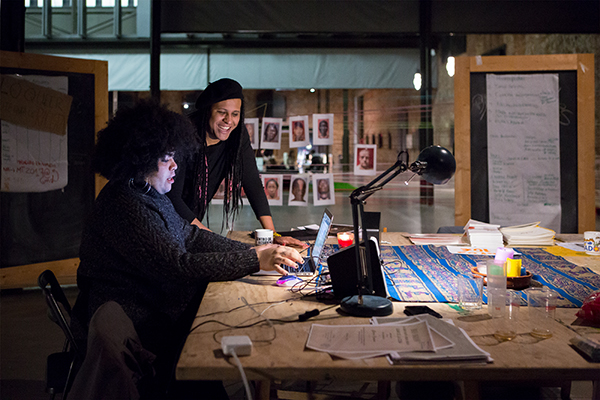Iki Yos Piña Narváez & Jota Mombaça

- Iki Yos Piña Narváez and Jota Mombaça
iki yos piña narváez. Afro-Caribbean, diasporic trans nonbinary body. performance artist and a visual artist. A writer, too. part of the Ayllu Collective. It’s a collaborative research group engaged with political action. We are migrants and POC, QPOC. iki yos researching anticolonial archives and Black radical thought, too. they work about their own body, in connection with the Black Caribbean. They investigate issues related to the Black memories in the Caribbean zone, as well as anti-colonial thoughts and practices of the Black Caribbean. They have made drawings about black/brown bodies, cimarrón bodies from their own experience, and ancestral entities connecting past time, present time, and future.
Recent works:
Museo Tamayo (México)
We don’t Choose this Future
Biennale Of Sydney (Ayllu Colective)
Jota Mombaça is an interdisciplinary artist whose work derives from poetry, critical theory and performance. The sonic and visual matter of words plays an important role in their practice, which often relates to anti-colonial critique and gender disobedience. Through performance, visionary fiction and situational strategies of knowledge production, they intend to rehearse the end of the world as we know it and the figuration of what comes after we dislodge the Modern-Colonial subject off its podium.
Recent works:
The Daughters of the Driest Rain // #NIRIN Biennale of Sydney 2020
Time Travel/Diaspora, Laboratory of Visionary Fiction // Nottingham Contemporary 2020
Can you sound like two thousand? // The Contemporary Journal 2020
La Leche Travesti with Iki Piña and Slim Soledad // Latitude on Air (Goethe Institut/Reboot FM) 2020
Transition & Apocalypse // The Present is Not Enough - HAU Berlin 2019
The project
As a duo, Narváez and Mombaça want to develop a project titled Black El Dorado. It is a research-based project focused on the delirium of El Dorado, rooted in the colonial thirst for extraction (stands for the geological dimension of colonization) and on the inconsistencies of these white regimes. Narváez and Mombaça are interested in ways of reading colonial narratives through its gaps. They want to learn through the radical fugitivity of Piryte (Fool’s Gold), read as an anticolonial talisman by both artists. Stemming from this interest, they want to investigate the relationship between the displacement of rocks and the dispossessive totalizing gestures of modern colonialism and enslavement.
Partager